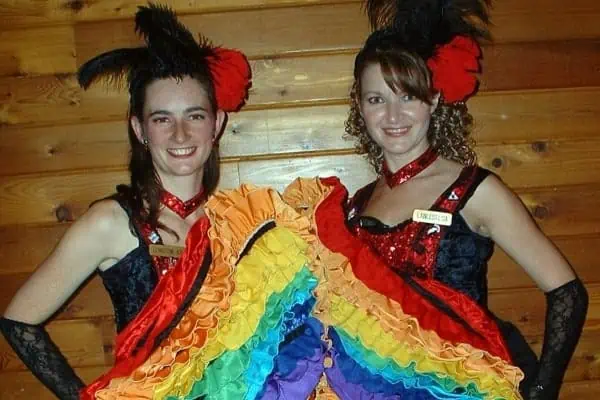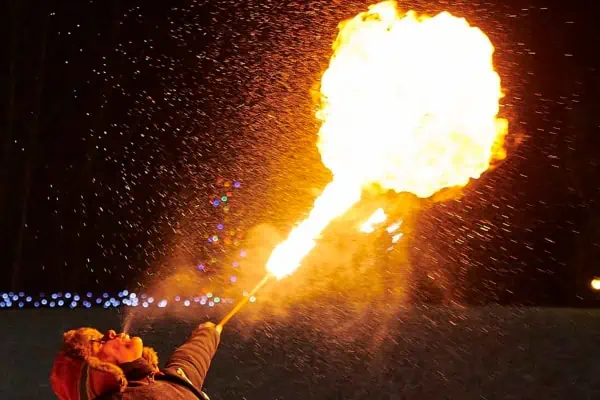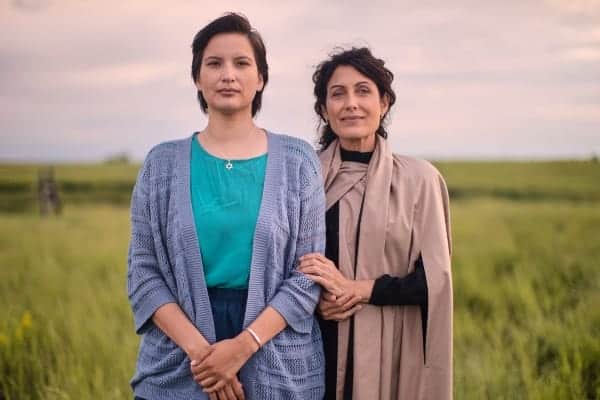Whimsy, angst and wit play in Joseph Tisiga’s drawings for the show Indigenous Incisions — or an Indigenous Ambivalence of the Abandoned Modern Man — opening Sept. 4 in the Yukon Arts Centre Community Gallery.
Or should I call him J. Ciga? That’s how he signs his drawings. Ciga (pronounced cih-guh, with a short sharp glottal stop) is the traditional Kaska form of the name he got from his Mom. When she got to school, it was changed to Tisiga.
His full name, Joseph Lambert Fish-Tisiga, lands him problems at the bank, where hyphen-resistant tellers want to call him Joseph Fish. They accuse him of using Tisiga as an alias.
These questions of identity, of how First Nations culture fits into contemporary society, inspire Tisiga’s drawings. (I figure I’ll use that name because it’s on the invitation card to his show.)
These can be serious, heavy issues. Tisiga capers through them.
A drawing of a peace pipe surrounded by clouds of inky black smoke bears the words made famous by Magritte, “This is not a pipe.” A similar drawing of a cigar, a play of words on “Ciga”, bears the same motto.
Tisiga uses collage, drawing and watercolour on Fabriano paper to create his “metaphorical environments”. A tipi appears in cutouts of Picasso’s head. Curious George opens a gate containing a herd of totem poles with legs. Northwest Coast style robots talk on cell phones on city streets. People dressed in bear costumes look on enviously as a queen suckles two bear cubs.
Words written in cursive watercolour often give a two or three-line context for the story in the drawing. Readers who saw Tisiga’s performance at Nakai’s HomeGrown Festival this past May might recognize the voice in these narrations as that of his character in Un(en)titled.
Tisiga loves to use “iconic things” like Picasso and Curious George to make his own stories. He delights in the culture available to public domain. He recombines these things, much like the sampling current in contemporary music.
Tisiga would like to see more “dialogue and collaborations,” especially among youth. He’s currently taking part in the Sundog Carvers program. He finds it interesting to work in the Northwest Coast style among these young people whose worlds are in some ways “a million miles away” from the nature-inspired imagery they’re carving.
How can these stylized eagle and bear faces inhabit the world of Pepsi and MTV?
His first mask carved at Sundog holds a can in its claw, to be painted with a Pepsi design.
His own position in relation to Northwest Coast style is also interesting to him. As a member of the Kaska Dene First Nation, his ancestors did not work in this style. Many of them worked as slaves in Tlingit houses. “Obviously, that’s over now,” Tisiga explains, but observes that resentment remains between families who shared these historical roles.
Tisiga plans to frame and present these drawings formally and professionally, documenting them well to enable his work to travel out of the territory.
He’s working on a standard size of paper so that he can go on drawing right up to the night before the show and frame his latest and best selection.
In the near future, Tisiga is interested in moving right off paper or canvas and painting buildings, vehicles and other large pieces of property with Northwest Coast imagery. He would work with the building’s owner to create a meaningful design.
Tisiga is pleased that Giddy-Up, Andrew Hunter’s installation of cowboy kitsch, will open the same night as his show.
Indigenous Incisions opens Sept. 4 at 7:30 p.m., at the same time as the shows in the Yukon Arts Centre public gallery. However it will only remain up until Sept. 28.




